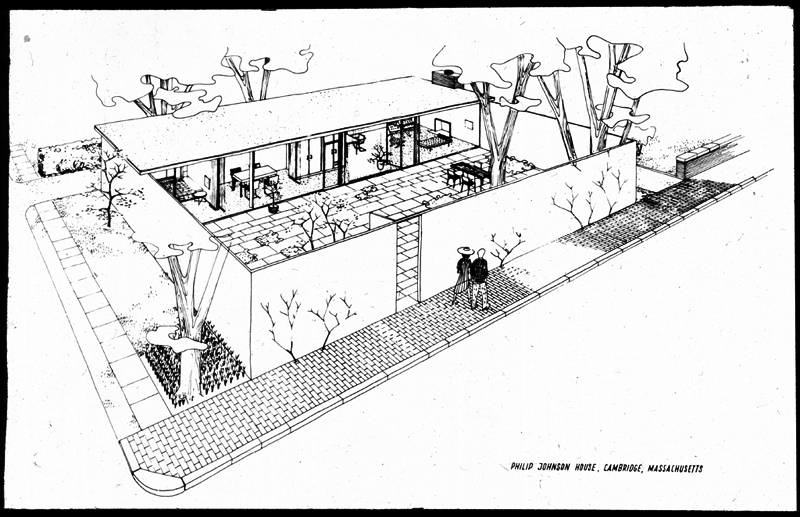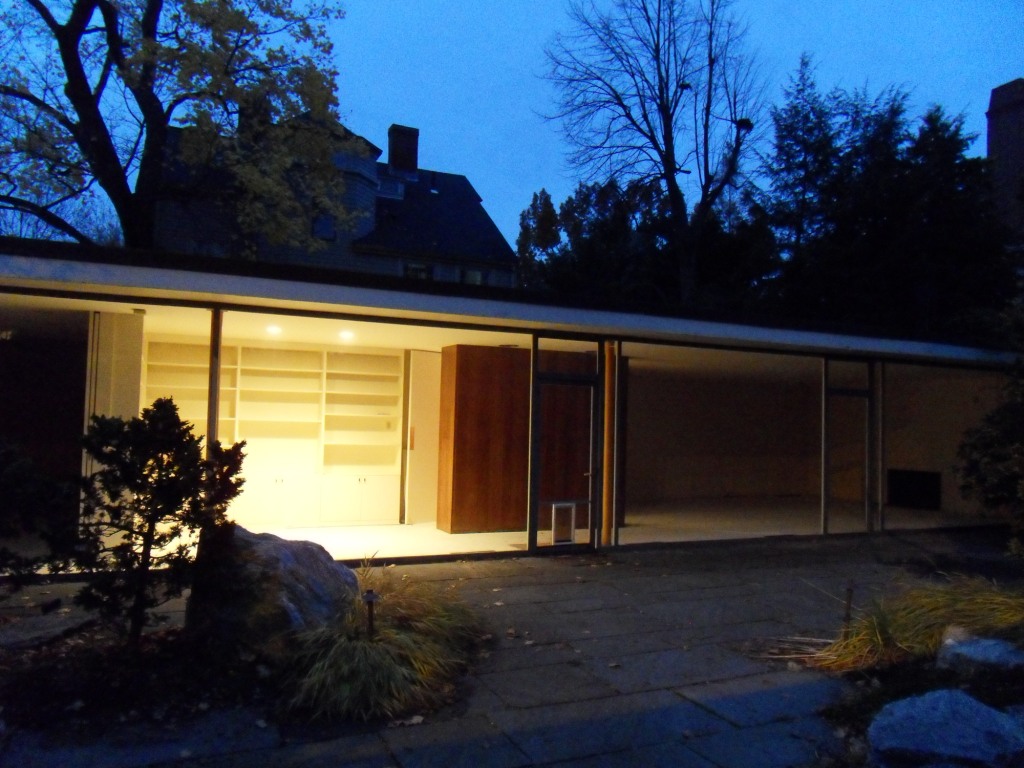9 ASH STREET HOUSE
Philip Johnson "Thesis House" 1942, Cambridge, MA
Graduate School of Design, Harvard University
Scope of Work
Execution of a full Historic Structures Report (HSR) of a Modern wooden house made form multiple prefabricated components designed by Philip Johnson. Preparation of the HSR included archival research in Cambridge and New York City, field survey, roof and trench probes, interior and exterior finish analysis and documentation of changes over time and existing conditions. Scope also included building stabilization and waterproofing recommendations prior to the selection of a full consultant team for comprehensive restoration.
Project Background & Profile
9 Ash Street was designed and built by Philip Johnson while he was student of architecture at the GSD. It was his first realized full scale design. The house was completed in 1942 with prefabricated wooden housing components and other materials that he was able to procure- despite ongoing wartime limitations. Several months after Johnson moved into the house, he petitioned Walter Gropius to accept it as his thesis requirement, hence the house’s nickname, “Thesis House.” Soon after Gropius and the faculty voted to accept it as his thesis, Johnson was drafted and left Cambridge. After the war, he never returned to Cambridge. The house was sold in 1945.
The HSR was the first time the building was the subject of an archival investigation and documentation. It was also critical to understanding the composition of the building which had been assembled from a variety of pre-existing wooden prefabricated panels and components. The building materials were examined and identified, illustrating the progressive building technology during World World II. Thus the unusual construction and atypical building materials explained the pattern of deterioration and provided information integral to creating a repair and restoration program.
The HSR also revealed that the house's corner lot was reportedly formerly used as a winter ice skating rink due to the area's topography which helped explain many of the site drainage and foundation issues identified during the condition survey.
After a series of five private owners after Johnson, the Graduate School of Design purchased the property in July 2010.











